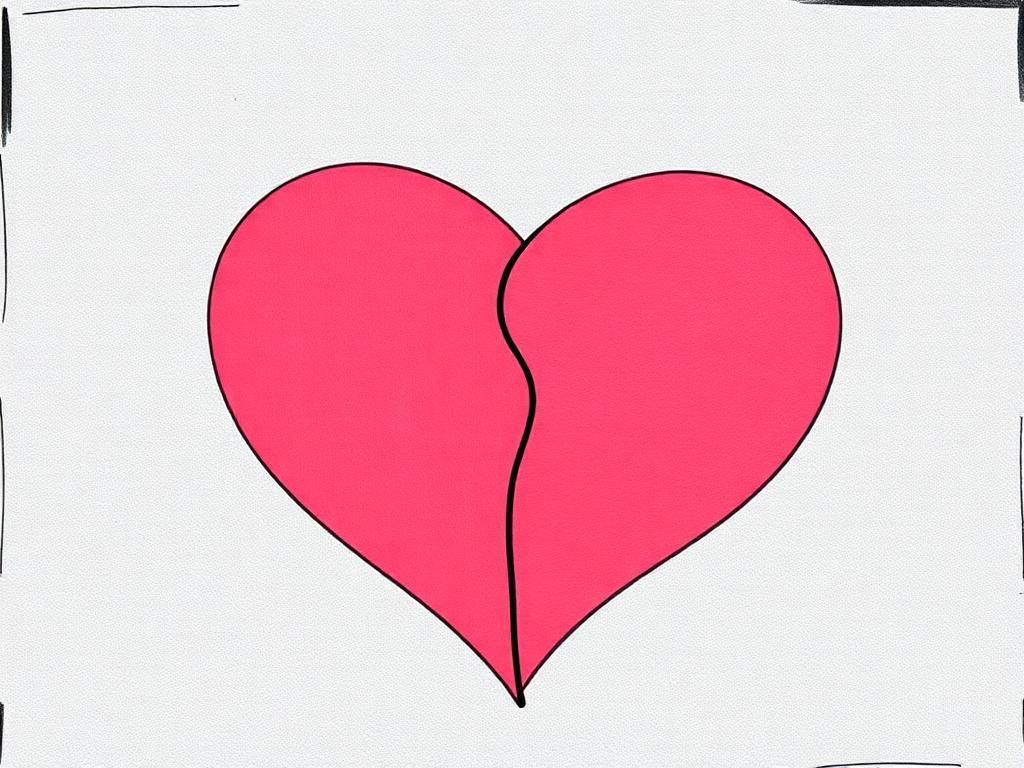Making the decision to end a marriage is one of the most challenging choices in life. Understanding when to get a divorce requires introspection, communication, and a grasp of both emotional and practical factors. This article aims to provide a thorough overview of the intricacies involved in this monumental choice, from recognizing the signs that indicate it may be time to seek divorce to understanding its legal implications and emotional impacts, especially on children.
Understanding Divorce: An Overview
Definition of Divorce
Divorce is defined as the legal dissolution of a marriage by a court or other competent body. This process enables married individuals to separate formally and legally allows both parties the freedom to remarry. There are various types of divorce, including contested, uncontested, and mediated divorces:
- Contested Divorce: Occurs when spouses cannot agree on one or more issues, requiring court intervention.
- Uncontested Divorce: Both parties agree on all major issues, making the process smoother and quicker.
- Mediated Divorce: Involves a neutral third party to help both spouses reach an amicable agreement.
Common Reasons for Divorce
Understanding when to get a divorce often starts with identifying the reasons behind the conflict. Some common causes include:
- Communication Breakdown: A lack of healthy dialogue can lead to misunderstandings and resentment.
- Infidelity: Betrayal can significantly damage trust, often leading spouses to choose divorce.
- Financial Issues: Disagreements over money management can create tension and strife.
- Growing Apart: Sometimes, couples just drift away from each other, realizing they no longer share the same values or interests.
- Substance Abuse: Addiction can strain relationships, making it difficult for partners to maintain a supportive and healthy union.
Signs It Might Be Time to Consider Divorce
Emotional Signs
Recognizing the emotional signs that it might be time to consider divorce is crucial:
- Persistent Feelings of Unhappiness: If you feel sad more often than happy, it may indicate deeper problems.
- Lack of Emotional Intimacy: A significant decline in intimacy can erode the foundation of a relationship.
- Resentment or Anger Towards Spouse: Lingering negative feelings can indicate unresolved conflicts and dissatisfaction.
Behavioral Signs
Behavioral changes often signal that a partnership is struggling:
- Recurring Arguments Without Resolution: If battles are cyclical and lead nowhere, they may suggest fundamental incompatibility.
- Avoidance of Each Other: Actively avoiding interaction can indicate a deep-seated desire to withdraw from the relationship.
- Seeking Comfort Outside the Marriage: Relying on others for emotional support can signify unmet needs within the marriage.
Practical Signs
Recognizing practical signs is essential when determining when to get a divorce:
- Decline in Shared Activities or Interests: A lack of common ground can make relationships feel isolated.
- Financial Struggles Exacerbated by Marital Issues: Financial issues can magnify existing tensions.
- Different Visions for the Future: If partners have conflicting goals, it may create insurmountable divides.
Self-Reflection: Questions to Ask Before Deciding
Personal Feelings
Questioning your personal feelings is vital:
- Do I Still Love My Partner? Assess your feelings honestly—sometimes, love evolves.
- Am I Willing to Work on the Relationship? Commitment to improvement can make a difference.
Relationship Assessment
Evaluate your relationship regarding its positives and negatives:
- Are There More Good Days than Bad? A balanced perspective can help clarify your situation.
- Have I Sought Counseling or Mediation? Seeking help is an essential step before making drastic decisions.
Life Circumstances
External influences often weigh heavily on relationships:
- Are External Stressors Affecting Our Relationship? Acknowledge how life changes might influence your marriage.
- What Impact Would Divorce Have on Children, if Applicable? Consider the emotional ramifications for any children.
The Role of Counseling and Support
Individual and Couples Therapy
Therapy can provide invaluable support in navigating when to get a divorce:
- Benefits of Professional Guidance: Experts can offer perspectives and coping mechanisms that may be overlooked.
- Approaches to Resolving Conflict: Learn techniques to communicate effectively, even in turmoil.
Support Groups and Networks
Connecting with others can provide comfort and advice:
- Sharing Experiences with Others: Hearing from those in similar situations can reaffirm your feelings.
- Gaining Perspective and Advice from Those Who’ve Been Through It: Learning from others’ journeys can help illuminate your own.
Legal Considerations in Divorce
Understanding the Legal Process
The legal aspects of divorce can be daunting, but being informed helps:
- Overview of Filing for Divorce: Understand state laws which may vary significantly.
- Different Laws by State or Region: Research local laws that may impact your case.
Importance of Legal Consultation
Having the right legal support is essential:
- Finding a Divorce Attorney: A qualified attorney can help navigate the complexities.
- Key Questions to Ask During Consultations: Inquire about their experience, fees, and approach to handling your case.
Financial Implications
Financial outcomes of divorce require attention:
- Division of Assets and Debts: Courts typically divide property equitably.
- Alimony and Child Support Considerations: Understanding your obligations and rights is critical for financial planning.
The Impact of Divorce on Children
Emotional Effects on Children
Children are often deeply affected by divorce:
- Common Reactions at Different Ages: Kids will react based on their developmental stages; younger children might fear abandonment while teens might express anger.
- The Importance of Stability and Communication: Keeping lines of communication open helps children process their emotions.
Co-Parenting Strategies
Effective co-parenting can mitigate some of the negative effects of divorce:
- Establishing a Co-Parenting Plan: A structured plan can provide a sense of normalcy for children.
- Maintaining Consistent Routines: Routine plays a crucial role in helping children cope with change.
Moving Forward After the Decision
Healing and Recovery
Post-divorce life necessitates healing:
- Importance of Giving Oneself Time: Recognizing that healing isn’t instantaneous is key.
- Engaging in Self-Care and Finding New Hobbies: Rediscovering interests can provide joy and reinvigoration.
Rebuilding Life
After separation, establishing a new routine is preferable:
- Establishing a New Routine: Having a structured schedule can help regain stability.
- Date and Relationship Recovery Strategies: Take your time before jumping into new relationships.
The Potential for Future Relationships
Reflecting on past encounters can shape future connections:
- Learning from Past Experiences: Understanding what works and what doesn’t can aid in future partnerships.
- Openness to New Relationships: It’s important to remain open to love and companionship again.
Conclusion
Summarizing Key Points
Considering when to get a divorce is multi-faceted and deeply personal. It demands honesty and reflection, alongside professional advice.
Encouragement to Seek Help
There are numerous resources available such as local support groups, marriage counselors, and legal professionals. Remember that reaching out for help is a sign of strength.
Additional Resources
Recommended Books and Articles
Professional Organizations and Hotlines
- National Divorce Hotline: 1-800-XXX-XXXX
Online Forums and Support Communities
Many websites offer forums for sharing experiences and gaining personal insights, promoting community support.
| Key Aspect | Details |
|---|---|
| Type of Divorce | Contested, Uncontested, Mediated |
| Common Reasons | Infidelity, Financial Issues, Growing Apart |
| Emotional Signs | Unhappiness, Lack of Intimacy |
| Questions for Reflection | Do I still love my partner? Am I willing to work on the relationship? |
| Legal Considerations | Asset Division, Child Support |
| Impact on Children | Emotional Effects, Co-Parenting Strategy |
FAQ Section
- What is the first step in getting a divorce? The first step is usually filing a petition for divorce in your local family court.
- How long does the divorce process typically take? The timeframe varies widely based on several factors but can range from a few months to several years.
- Can I get a divorce without a lawyer? Yes, but it’s recommended to consult a lawyer for guidance on legal proceedings.
- What are the effects of divorce on children? Children may experience a range of emotions, including sadness, anger, and confusion.
- How do I prepare for a divorce? Consider consulting a therapist, gathering financial documents, and contemplating your future after the divorce.
- What is mediation in divorce? Mediation involves a neutral third party who assists both spouses in negotiating terms of their divorce.


